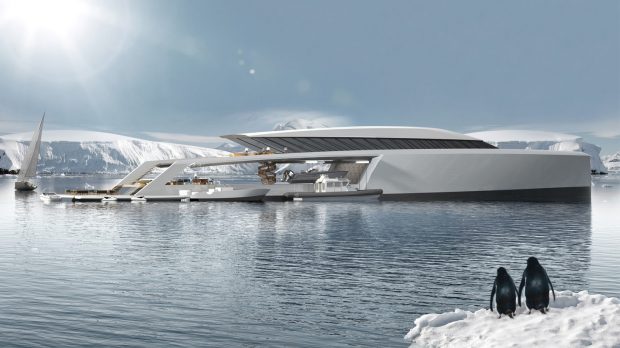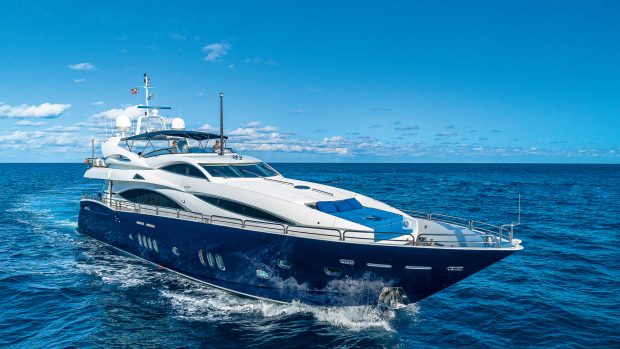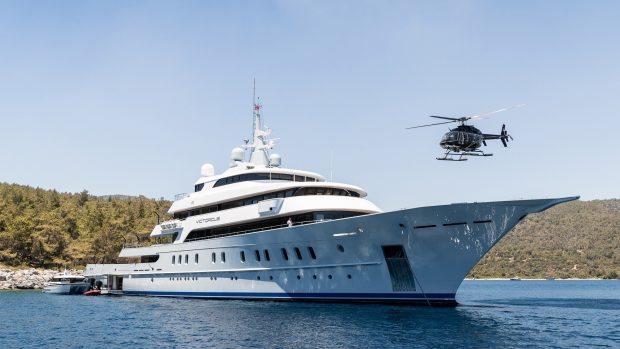The crown of world’s largest superyacht is due to be passed on - here’s what you need to know about the newcomer 183m REV...
Azzam’s 8-year reign as the world’s largest superyacht is nearly over – the 183.6m (602ft) goliath known as REV (short for Research Expedition Vessel) is under construction in Norway with an estimated delivery date of 2024.
Ahead of this figurative passing of the torch, we take a look at this new arrival and some of its star features…
Who is REV’s owner?
Kjell Inge Røkke, the majority owner of Norwegian holding company Aker ASA, is the man behind REV Ocean, a non-profit organisation founded in 2017 that financed the build and will operate REV on her ocean adventures.
How much did REV cost?
As with all of the world’s largest superyachts, the exact price of REV is a closely guarded secret, but Forbes estimates that she cost around $350million (approx £253million). That’s a lot in, but it pales in comparison to the estimated $600million (approx £434million) cost of Azzam.
Article continues below…

Lürssen launches Azzam, the world’s largest superyacht
Azzam pushes Roman Abramovich's Eclipse into second place in the superyacht size stakes

The ultimate man cave? Inside 66m superyacht shadow boat Hodor
What was REV built for?
The idea behind REV is as simple as it is ambitious: “To make the ocean healthy again.”
The way REV Ocean plans to achieve this is by researching, campaigning and developing solutions for three key areas: plastic pollution, ocean acidification, and overfishing.
The expeditions will work towards these lofty aims by carrying up to 54 scientists and 36 crewmembers to some of the most remote areas on earth.
Who built REV?
Norwegian yard Vard has taken care of the primary construction phase, beginning with fabrication at its Romanian yard in Tulcea before the steel giant was moved to its Brattvåg shipyard in Norway last summer for outfitting.
The final stages are due to take place at the German yard Lloyd Werft, which has superyacht pedigree, having worked on the 115m Luna. Superyacht designer Espen Øino was also heavily involved in the development.
What toys does she carry?
REV will be fully kitted out to research the ocean’s biggest problems, with two helicopters, five gantry cranes, and an array of manned and unmanned submarines capable of diving to a maximum depth of 7,500ft via the moonpool – a 7.7m x 5m opening in the centre of the hull.
Why does she need to be so big?
As well as carrying all those underwater gizmos, REV will also house six laboratories, a 36-seat lecture auditorium, a media editing suite, a conference centre and an exhibition room, not to mention enough deck space for carrying up to 12 shipping containers.
How fast is REV?
Powered by a gargantuan 2.7MW Wärtsilä diesel-electric system, she has an estimated top speed of 17.8 knots and a cruising range of 21,120 nautical miles at 11 knots.
How can I get on board REV?
The world’s largest superyachts are notoriously secretive and hard to get on board, but REV will be the exception to the rule. If you’re a world-class oceanographer, there’s a good chance you’ll be invited on board at some point via one of the project’s partners, which include WWF and the UN Environment Programme.
“REV will be a platform for gathering knowledge,” explains Inge Røkke. “I would like to welcome researchers, environmental groups, and other institutions on board, to acquire new skills to evolve innovative solutions to address challenges and opportunities connected to the seas.”
For the rest of us, REV will be offered as a charter yacht for up to four months per year, either on a full-yacht or per-cabin basis. Prices are yet to be confirmed, but it’s safe to assume you’ll need deep pockets.
Update: In June 2021, the team behind REV announced on their official website that the project was facing delays of three to five years.
“Over the past year, the construction of the REV Ocean vessel has been beset by delays caused by the yard,” the statement read. “We have been hoping the situation would improve, but compounding issues are causing further setbacks. We have not received a timeline for when a compliant ship will be delivered.
“Our own best estimate suggests a three to five year delay for when the vessel can be placed in operation. This is related to technical and weight challenges, and the ship is as of today not in accordance with the specifications in the shipbuilding contract. Delivery can first take place when the ship is able to conduct the research and expedition missions which the ship is intended for.”
The statement also hints at the option to cancel the contract due to the length of the delay, an option that they have yet to take up.

REV cost an estimated $350million (£253million)

Her mission is “to make the ocean healthy again”

REV can carry up to 12 shipping containers

They can be unloaded via five gantry cranes

Twin helipads allow for shoreside expeditions











